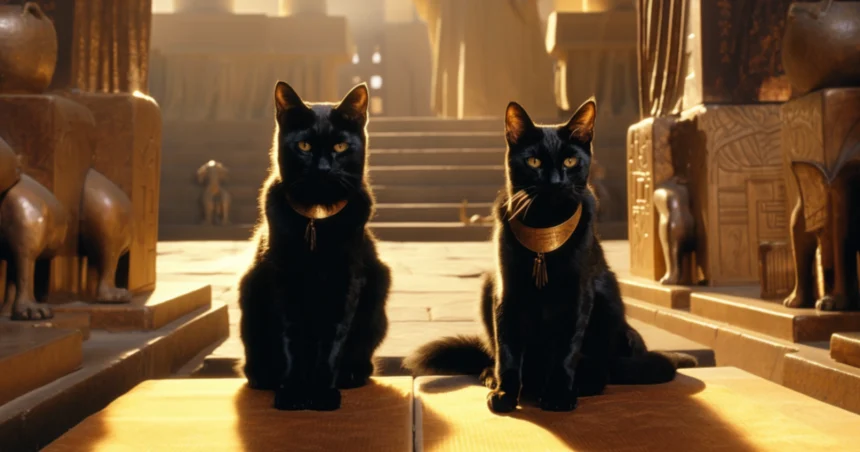Cats. They’re cute, cuddly, and found in many homes today. But where on earth did these felines first emerge? Their origins go back over 10 million years. Primitive predators eventually evolved into the Felidae family of cats as we know them. This article will uncover the fascinating history of feline evolution and domestication. We’ll learn when humans first encountered these furry creatures and how they went from wild hunters to lounging on couches. So curl up and enjoy this journey through the remarkable history of cats.
Origin of the Felidae Family
The evolutionary origins of cats trace back over 10 million years ago. Primitive predators on the prowl eventually evolved into the family Felidae–giving rise to the first true cats. These new feline hunters continued adapting over millions of years. They developed key traits and skills for stalking prey like sharp retractable claws, stealthy agility, night vision, acute hearing, and a keen sense of smell.
Within the Felidae family, one ancestral genus emerged called Felis roughly 6-7 million years ago. These cats were about the size of modern bobcats. Over time, Felis diversified into various species, forming the foundations of many small wild cats we know today. A pivotal cat within this genus was Felis silvestris. This agile, small cat was well-equipped for hunting rodents and other little critters. Eventually, a subspecies called Felis silvestris lybica emerged. This cat became the direct ancestor of all domestic cats.
Evolutionary Traits
Through evolution, cats developed superb senses for hunting. Their large, movable ears can detect the faintest sounds and pinpoint prey. Their eyes contain a reflective layer for night vision and can perceive quick movements. And cats boast a powerful sense of smell—roughly 14 times better than humans! They use scent to track prey and communicate. These innate skills, along with retractable claws and lightning reflexes, make cats effective hunters and predators.
Domestication of Cats
Cats began the domestication process over 10,000 years ago in the Near East’s Fertile Crescent. This all started with the wildcat ancestor Felis silvestris lybica. These sandy-colored desert cats were drawn to rodents in early farming communities. As humans stored more grain, it attracted mice—giving cats ample hunting opportunities. Soon cats were welcomed by people for controlling pests.
Over time, humans encouraged cats to stick around by providing food scraps. Cats grew accustomed to human contact. Their wild tendencies mellowed through selective breeding of the tamer cats. This domestication process occurred in two primary waves—one in the Fertile Crescent, and later in ancient Egypt. Studies of cat DNA reveal most modern house cats are descendants of the Fertile Crescent cats. This was the initial domestication hub.
Cats in the Fertile Crescent
In the Fertile Crescent’s early Neolithic period, cats first entered into a mutually beneficial relationship with humans. Drawn to settlements by rodents infesting grain stores, cats proved adept hunters of these pests. People welcomed them and likely started intentionally feeding cats to encourage them to stick around. This selective breeding of less aggressive cats laid foundations for domestication. With cats mousing, people could store surplus grain, supporting the growth of civilization.
Cats in Ancient Egypt
Later in ancient Egypt, cats grew even more integrated into daily life. As Egyptians worshipped cat goddesses like Bastet, cats gained prestige. Egyptians memorialized cats in art, mummified them, and even used them as courthouse rodent control! This tight-knit coexistence further strengthened bonds between cats and people. While Egyptians deeply valued felines, the Fertile Crescent first cultivated relationships between humans and cats. Still, Egyptians helped drive cats’ transition from pest controllers to pampered pets.
Cats’ Global Spread
As cat domestication advanced, felines began traversing the globe alongside human travelers. Around 3,600 years ago in ancient Egypt, cats likely climbed aboard trading ships to hunt mice and rats threatening food stores. Cats soon spread through Europe, arriving in what’s now Romania over 2,500 years ago and Britain around 2,000 years ago.
Explorers also introduced cats abroad. In the 1600s, European settlers brought them to the Americas to control pests. And in the 1800s, cats joined prospectors on ships bound for Africa, spreading throughout the continent. Whether as working pest controllers or pets, cats’ global journeys trace maritime routes and explorations. Today, these world travelers are among the most widespread domestic animals, found on all continents except Antarctica.
Conclusion
The history of our feline friends is full of twists and turns! From early predatory mammals to evolving into mighty hunters, cats’ origins are ancient. Wildcats first partnered up with humans over 10,000 years ago, helping early civilizations thrive by mousing. Cats grew even closer to people in Egypt, gaining prestige. Then explorers spread cats worldwide as both workers and companions. It’s amazing how these tiny furballs adapted from the forest to the couch! Through sharp survival skills and forming bonds with humans, cats carved out quite the success story. That’s the scoop on how felines got where they are today!


